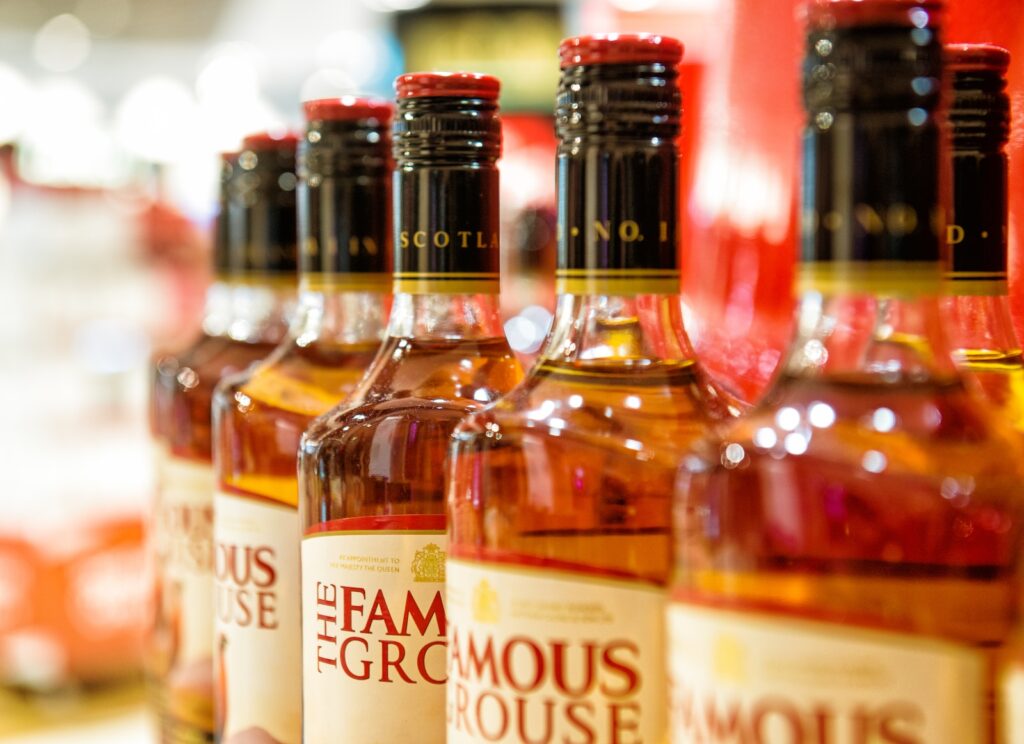Whiskey Business is not just about indulging in a drink; it’s an immersive experience that unveils a realm of rich flavors, captivating history, and meticulous craftsmanship. Regardless of whether you’re a whiskey neophyte or an intermittent imbiber seeking to delve deeper into the realm of whiskey, this guide for beginners will serve as your passport to understanding the core aspects of whiskey tasting, pairing, and appreciation. From acquainting yourself with the diverse whiskey variants to mastering the art of savoring each velvety sip, we are here to equip you with indispensable skills and knowledge, enabling you to embark on an unforgettable Whiskey Business adventure.
Introduction
Whiskey Business, often referred to as the “liquid gold,” carries within it a heritage steeped in history, spanning countless centuries. Meticulously crafted through the art of distillation and patient aging, it presents a multifaceted array of flavors and fragrances that enchant the senses. Within this guide, our aim is to unravel the enigma surrounding whiskey and equip you with the necessary instruments to wholeheartedly embrace and relish this exceptional elixir.
Understanding Whiskey
What is whiskey?
Whiskey, spelled without an “e” in countries like Scotland and Canada, or with an “e” in the United States and Ireland, is a distilled alcoholic beverage made from fermented grain mash. The most common grains used in whiskey production include barley, corn, rye, and wheat. Each grain contributes unique characteristics to the final product.
Types of whiskey
Whiskey can be categorized into several types, each with its own distinct attributes. Some popular types of whiskey include:
- Scotch Whisky: Produced in Scotland, Scotch whisky is renowned for its smoky and peaty flavor profile. It is often classified as either single malt (made from malted barley in a single distillery) or blended (a combination of malt and grain whiskies).
- Bourbon: A distinctly American whiskey, bourbon must be made from at least 51% corn and aged in new charred oak barrels. It boasts a rich, sweet, and full-bodied taste.
- Irish Whiskey: Known for its smoothness and triple distillation process, Irish whiskey offers a lighter and fruitier flavor compared to other types. It is typically made from a mixture of malted and unmalted barley.
- Rye Whiskey: Rye whiskey has a spicy and robust flavor profile, primarily derived from the use of rye grain. It can be produced in the United States and Canada, each with its own regulations.
- Japanese Whisky: Inspired by Scotch whisky, Japanese whisky has gained international acclaim for its exceptional craftsmanship and attention to detail. It encompasses a wide range of styles and flavors.
The Art of Tasting Whiskey

Tasting whiskey is a sensory experience that allows you to explore its nuances and appreciate its complexity. By following these steps, you can elevate your whiskey-tasting journey:
Choosing the right glassware
Start by selecting a glass that enhances the whiskey’s aroma and flavor. The most commonly used glass for whiskey tasting is the Glencairn glass, designed with a tulip-shaped bowl to concentrate the aromas.
Evaluating the appearance
Observe the whiskey’s color and clarity. Hold the glass up to a light source and take note of any variations in hue. The color can offer insights into the whiskey’s age, cask type, and filtration methods.
Engaging the senses
Bring the glass to your nose and inhale gently. Take your time to identify the different aromas. Whiskey can exhibit a wide range of scents, including fruity, floral, spicy, woody, or smoky notes.
Assessing the aroma
Try to decipher the whiskey’s aroma profile. Pay attention to the intensity, complexity, and balance of the scents. Swirl the whiskey in the glass to release additional aromas.
Savoring the flavor
Take a small sip and let it coat your palate. Pay attention to the whiskey’s taste and texture. Note any dominant flavors and how they evolve as you savor the spirit.
Noting the finish
The finish refers to the lingering taste and sensations after swallowing the whiskey. Consider the length, complexity, and any pleasant or lingering aftertastes.
Pairing Whiskey with Food
Pairing whiskey with food can enhance both the flavors of the spirit and the dish. Here are some general guidelines to help you create harmonious combinations:
General guidelines
When pairing whiskey with food, consider the whiskey’s flavor profile and the dish’s intensity. Aim for complementary or contrasting flavors to create a balanced experience.
Complementary flavors
Certain flavor pairings work exceptionally well with whiskey. For example, the rich sweetness of bourbon can beautifully complement dark chocolate, while the smoky notes of peated Scotch whisky can enhance the flavors of smoked salmon.
Enhancing the experience
Experiment with different combinations to find your own preferences. Try sipping a smoky Islay Scotch alongside a slice of tangy blue cheese, or enjoy a smooth Irish whiskey alongside a piece of creamy caramel dessert.
Appreciating Fine Whiskey
To truly appreciate fine whiskey, it helps to understand the factors that contribute to its quality and character. Here are some key considerations:
Exploring whiskey regions
Whiskey is produced in various regions worldwide, each with its own distinct styles and characteristics. From the peaty whiskies of Islay to the smooth and light whiskies of Speyside, exploring different regions can broaden your whiskey knowledge and palate.
Understanding age statements
Age statements indicate the length of time a whiskey has been matured in oak barrels. While older whiskies often command higher prices, age alone doesn’t guarantee superior quality. Younger whiskies can also exhibit exceptional flavors, influenced by factors such as cask type and distillery techniques.
Recognizing quality indicators
Look out for indicators of quality, such as awards, distillery reputation, and independent reviews. These can provide insights into the craftsmanship and consistency of a whiskey brand.
Building a whiskey collection
As you develop your appreciation for whiskey, you may find yourself building a collection of bottles. Consider factors such as variety, region, and personal preferences when selecting whiskies to add to your collection. Remember to store them properly to maintain their quality and flavors.
Common Whiskey Misconceptions
While whiskey is a versatile spirit, there are some common misconceptions that persist. Let’s debunk a few of them:
Neat vs. on the rocks
One misconception is that whiskey should always be enjoyed neat (without ice) to fully appreciate its flavors. However, adding a few drops of water or enjoying it on the rocks can help open up the whiskey and release its aromas and flavors. Experimentation is key to finding your preferred serving style.
Mixing whiskey with other beverages
While whiskey is delicious on its own, it can also be mixed with other ingredients to create delightful cocktails. From the classic Old Fashioned to the refreshing Whiskey Sour, mixing whiskey opens up a world of possibilities and flavors.
Is expensive always better?
Price doesn’t always equate to quality when it comes to whiskey. While some premium bottles may offer unique and exceptional experiences, there are also affordable options that deliver excellent flavors. Don’t be afraid to explore different price ranges and discover hidden gems within your budget.
Whiskey Cocktails for Beginners
If you’re new to whiskey, experimenting with cocktails can be a great way to ease into the spirit’s flavors. Here are some classic whiskey cocktails and easy-to-make drinks perfect for beginners:
Classic whiskey cocktails
- Old Fashioned: Made with whiskey, sugar, bitters, and an orange twist, the Old Fashioned is a timeless and sophisticated cocktail.
- Whiskey Sour: A refreshing blend of whiskey, lemon juice, and simple syrup, garnished with a cherry, the Whiskey Sour is a popular choice for whiskey novices.
Easy whiskey-based drinks
- Whiskey Ginger: Mix whiskey with ginger ale or ginger beer for a simple yet flavorful drink.
- Whiskey Highball: Combine whiskey with soda water and a squeeze of fresh lemon or lime juice for a light and bubbly beverage.
Whiskey Etiquette and Socializing
Whiskey is often enjoyed as a social drink, whether at tastings, gatherings, or whiskey clubs. Here are some etiquette tips to keep in mind when partaking in whiskey-related social activities:
Drinking responsibly
Always drink responsibly and be mindful of your alcohol consumption. Whiskey has a way of bringing people together. Engage in conversations with fellow whiskey enthusiasts, share your thoughts and experiences, and be open to learning from others.
Participating in tastings and events
Attending whiskey tastings and events can deepen your knowledge and provide opportunities to sample a wide variety of whiskies. Embrace these experiences to expand your palate and gain insights from industry experts.
Conclusion : Whiskey Business
With its rich history, diverse flavors, and intriguing craftsmanship, whiskey offers an exciting journey of exploration and enjoyment. By understanding the fundamentals of tasting, pairing, and appreciating fine spirits, you can embark on a whiskey adventure that will continue to delight and engage your senses. So raise a glass, savor the flavors, and toast to the world of whiskey.
Read also : Luna Crypto: A Game-Changing Investment Opportunity You Can’t Miss




